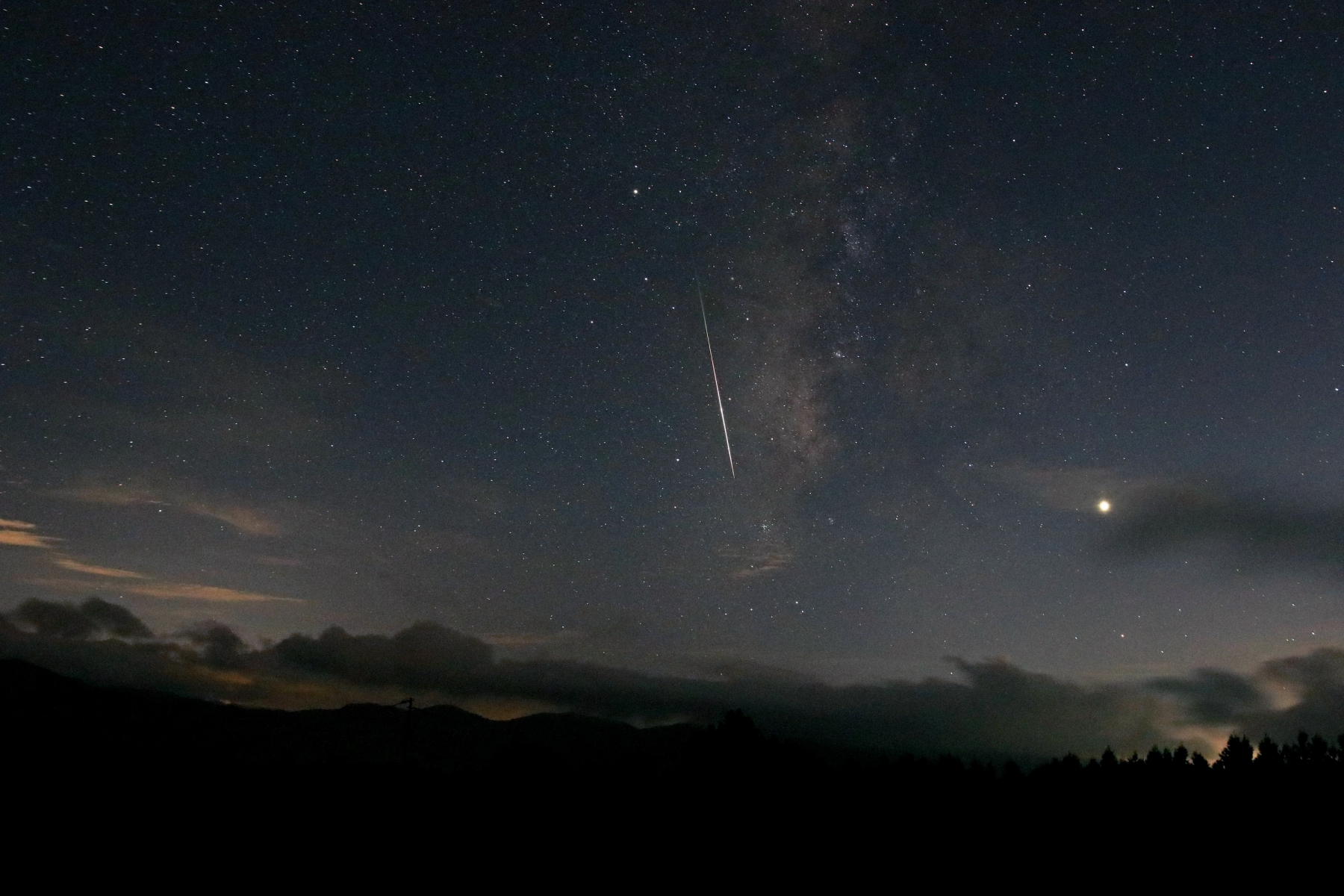
Meteor Activity Outlook for February 26-March 4, 2022
Daniel Bush captured this extremely bright fireball at 4:43 CST (10:43 UT) on January 2, 2022, from Albany, Missouri, USA.…

Daniel Bush captured this extremely bright fireball at 4:43 CST (10:43 UT) on January 2, 2022, from Albany, Missouri, USA.…

During this period, the moon reaches its last quarter phase on Tuesday September 28th. At that time the moon lies 90 degrees west of the sun and rises near 23:00 local daylight saving time (LDST). This weekend the waning gibbous moon will rise during the late evening hours and will interfere with meteor observing the remainder of the night.

During this period, the moon reaches its full phase on Saturday October 31st. At this time, the moon is located opposite the sun and lies above the horizon all night long. As this period progresses, the waning gibbous moon will rise later with each passing night, allowing a short period of dark sky between dusk and moon rise.

Annie MacDonald was attempting to photograph aurora from Culduie, Scotland, on February 17, 2020, when a bright meteor streaked though…

Gideon Holtz captured this brilliant fireball on February 16, 2020 at 20:31 MST (03:31 Universal Time February 16) from Seligman,…

During this period the moon reaches its first quarter phase on Sunday February 2nd. At this time the moon will lie 90 degrees east of the sun and will set between midnight and 01:00 local standard time (LST). As the week progresses the waxing gibbous moon will enter the morning sky, shrinking the window of opportunity to view meteor activity under dark skies.

During this period the moon reaches its full phase on Thursday December 12th. At this time the moon will be located opposite the sun and will lie above the horizon all night long. This weekend the waxing gibbous moon will set a couple of hours before dawn allowing a quick session under dark skies before the onset of dawn.

Many composite images have been made of the Perseids and Geminids. Have you ever seen one of a minor shower?…

During this period the moon reaches its first quarter phase on Monday June 10th. At this time the moon is located 90 degrees east of the sun and sets near 0200 local daylight saving time (LDST). As the week progresses, the waxing gibbous moon will set later in the morning with each passing night, reducing the window of dark skies available.

During this period the moon will reach its new phase on Tuesday October 16th. At this time the moon will be located 90 degrees east of the sun and will set near midnight local daylight saving time (DST). This weekend the waxing crescent moon will set during the late evening hours leaving the remainder of the night nice and dark for meteor observing.

During this period the moon will reach it's new phase on Thursday July 12th. At that time the moon will be located near the sun and will be invisible at night. This weekend the waning crescent moon will rise during the early hours and will not interfere too much with viewing meteor activity as long as you keep it out of your field of view.
The estimated total hourly meteor rates for evening observers this week is near 3 for observers situated at mid-northern latitudes and 4 for observers viewing from the southern tropics (latitude 25 S.). For morning observers the estimated total hourly rates should be near 9 for observers situated at mid-northern latitudes and 12 for observers viewing from the southern tropics.
During this period the moon reaches its new phase on Thursday October 23th. At this time the moon is located…
Meteor season finally gets going in July for the northern hemisphere. The first half of the month will be much…
During this period the moon reaches its full phase on Friday October 18th. At this time the moon lies opposite…
Learn more about the AMS Technology Platform (Fireball Report, Meteor Observing, All sky cameras and more)
The American Meteor Society has received 40 reports of a bright meteor that occurred near 06:30 PST on Friday morning…
The American Meteor Society has received reports of two more bright fireballs occurring on March 5th. We have received approximately…